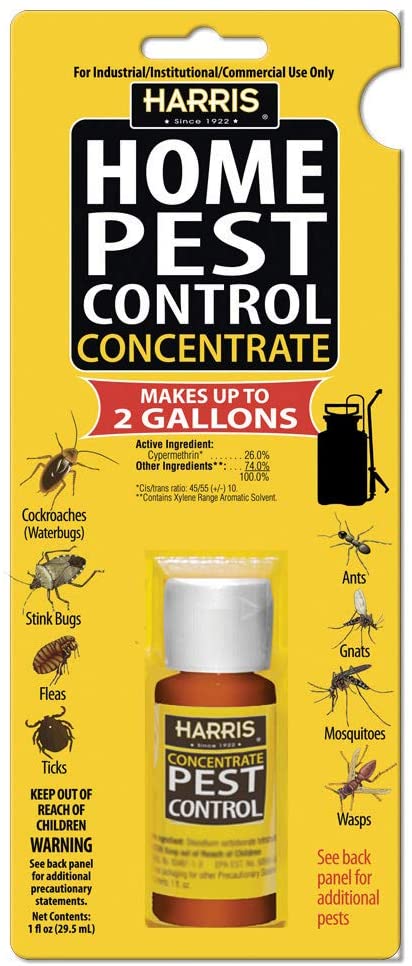Experienced A1 Exterminators Charlotte NC - Quick and Reliable Solutions
Experienced A1 Exterminators Charlotte NC - Quick and Reliable Solutions
Blog Article
Bed Bug Therapy Breakdown: Contrasting Chemical Vs. Non-Chemical Solutions
In the realm of pest control, particularly when taking care of the persistent problem of bed pests, the option between chemical and non-chemical therapy options can be an essential one. Both methods offer distinctive benefits and drawbacks, affecting variables such as effectiveness, security considerations, and overall cost. By taking a look at the nuanced details of each technique, a clearer understanding of which path to pursue in attending to a bed insect problem can be acquired.
Effectiveness of Chemical Treatments
Chemical treatments for bed insect infestations have actually been widely acknowledged for their potent and rapid efficiency in eradicating these parasites. When considering the performance of chemical therapies, it is critical to recognize that they can supply a comprehensive and fast option to a bed pest trouble. Professional pest control men usually rely upon pesticides to target bed insects at numerous phases of their life process, including grownups, eggs, and nymphs. These chemicals typically work by interrupting the bed insects' nerve system, leading to paralysis and ultimate death.
Moreover, chemical therapies have the benefit of offering recurring impacts, meaning that they can proceed to eliminate bed insects even after the first application. This residual action is particularly helpful in combating any type of prospective re-infestations. Additionally, the rapid action of chemical therapies can bring alleviation to people dealing with extreme bed pest infestations, permitting them to reclaim control of their home rapidly.
Safety Worry About Chemical Solutions
One important facet that calls for careful factor to consider when using chemical services for bed insect treatment is making certain the security of owners and the environment. Exposure to particular chemicals utilized in bed bug therapies can lead to respiratory system issues, skin irritability, or other negative responses, especially in people with pre-existing problems or level of sensitivities.
Furthermore, the environmental influence of chemical remedies is an additional considerable factor to consider. Some chemicals used in bed bug therapies may be dangerous to beneficial bugs, wild animals, and communities if they seep into the soil or water systems. It is crucial to make use of chemical treatments judiciously, adhering to security standards, and taking into consideration much less toxic alternatives to reduce these threats and make certain the secure and efficient management of bed pest infestations.
Advantages of Non-Chemical Techniques
Taking into consideration the prospective safety problems and ecological effect connected with chemical options for bed pest treatment, checking out non-chemical methods presents an appealing choice with a number of distinctive advantages. Non-chemical treatments are eco pleasant, as they do not add to air or water pollution, making them a sustainable selection for insect control.
Additionally, non-chemical remedies can be effective in targeting bed pests, including hard-to-reach locations where chemical therapies may not penetrate. Approaches such as warm treatment, vacuuming, vapor cleansing, and bed mattress encasements offer extensive removal without making use of unsafe chemicals. In addition, non-chemical strategies can be less turbulent, requiring minimal prep work and enabling for quicker reentry right into treated areas. On the whole, selecting non-chemical bed pest treatment techniques not only prioritizes safety and security and environmental management however likewise makes certain efficient and extensive bug control.
Limitations of Non-Chemical Treatments

In addition, non-chemical treatments typically call for several applications to attain effective removal. This can be time-consuming and might not always assure full removal of all bed pests and their eggs, especially in hard-to-reach or surprise areas.
Additionally, the success of non-chemical therapies greatly relies on appropriate application and thoroughness, which can be testing for individuals without specialist know-how. Poor application of non-chemical techniques may lead to insufficient eradication, leading to consistent problems and the need for added therapies.
Therefore, while non-chemical treatments have their benefits, it is necessary to acknowledge these constraints and consider them when determining one of the most effective method for taking care of bed pest problems.
Cost Comparison: Chemical Vs. Non-Chemical Options
Offered the restrictions connected with non-chemical treatments, an important facet to examine in the context of bed what is pest control at home pest monitoring is the expense comparison between chemical and non-chemical choices. Chemical therapies typically involve the application of insecticides by specialists, which can vary from $250 to $900 per space, relying on the intensity of the invasion and the size of the location to be dealt with. On the other hand, non-chemical therapies like warmth treatment or heavy steam can be much more pricey, with prices varying from $1,000 to $6,000 for a whole home. While the first expense of chemical therapies may seem reduced, numerous treatments might be called for to completely eliminate the invasion, possibly increasing the general cost. On the various other hand, non-chemical alternatives may supply a much more eco-friendly and sustainable option, although they can be cost-prohibitive for some individuals. Inevitably, when taking into consideration the expense of bed insect therapy alternatives, it is very important to consider the in advance expenses versus the performance and lasting sustainability of the chosen method.
Conclusion

Considering the potential security concerns and environmental influence connected with chemical options for bed pest treatment, checking out non-chemical approaches offers an appealing option with numerous distinct benefits.Offered the limitations associated with non-chemical treatments, an important element to assess in the context of bed pest monitoring is the price comparison in between chemical and non-chemical alternatives. In comparison, non-chemical treatments like warm treatment or steam can be a lot more costly, with prices varying from $1,000 to $6,000 for an entire home. While the initial expense of chemical therapies might seem lower, several treatments might be needed to totally eradicate the invasion, possibly increasing the overall expense.In conclusion, when contrasting chemical and non-chemical bed look at this now bug treatment choices, it is essential to consider performance, safety and security, benefits, restrictions, and cost.
Report this page